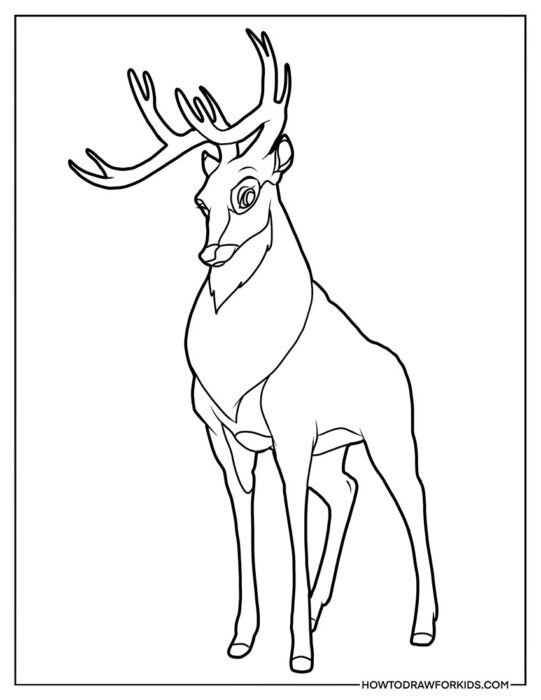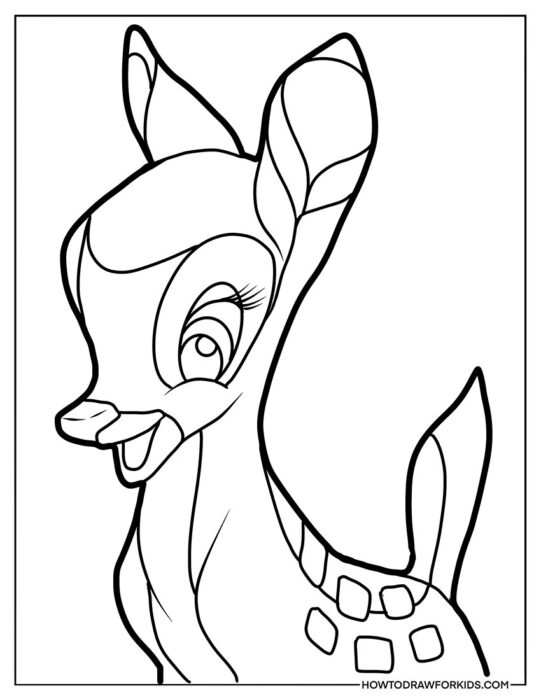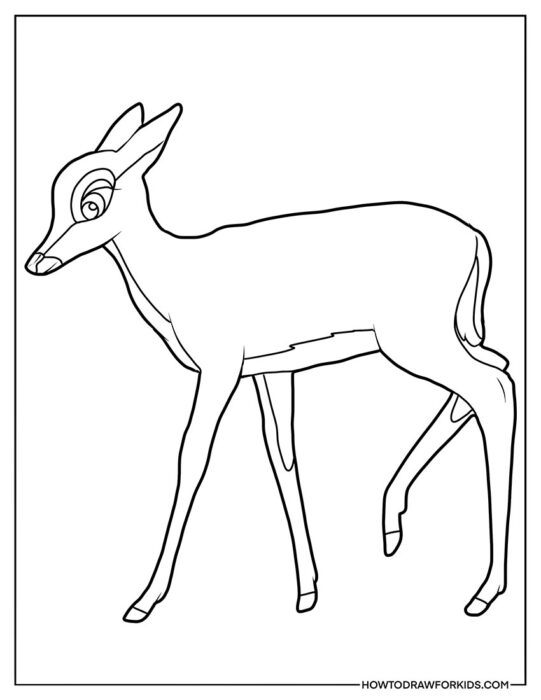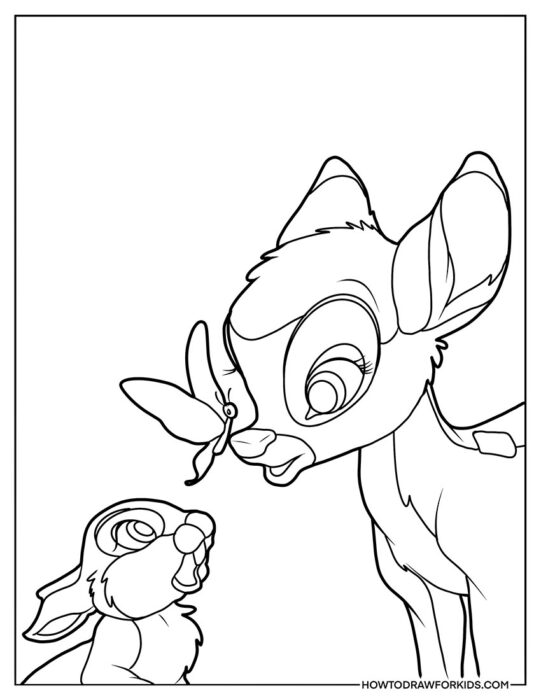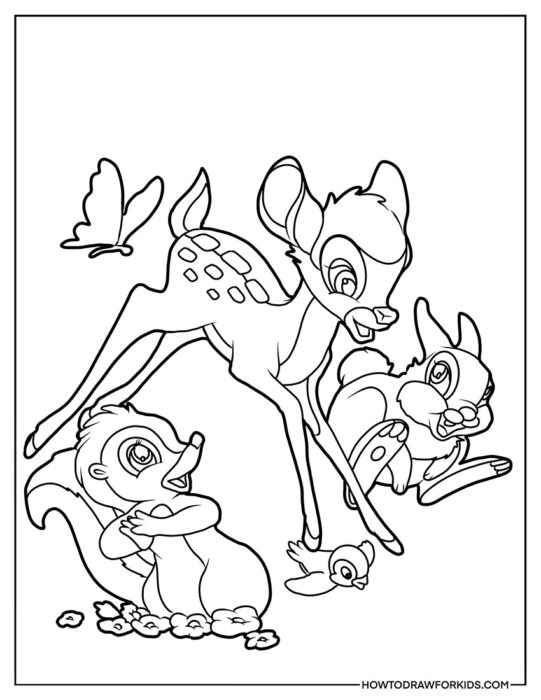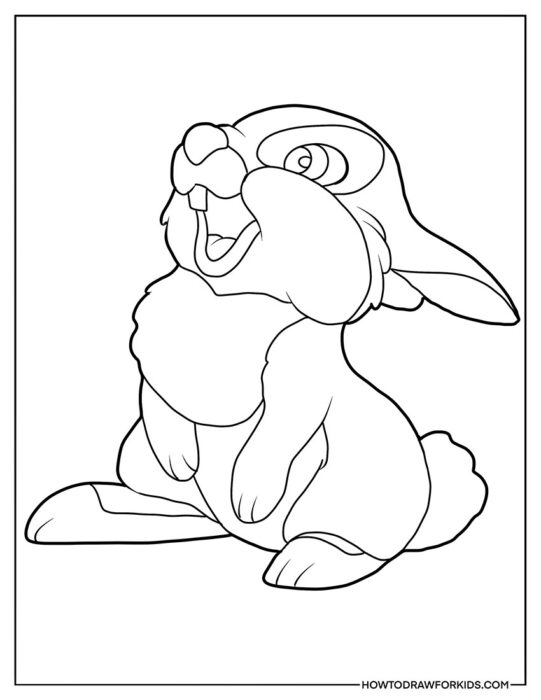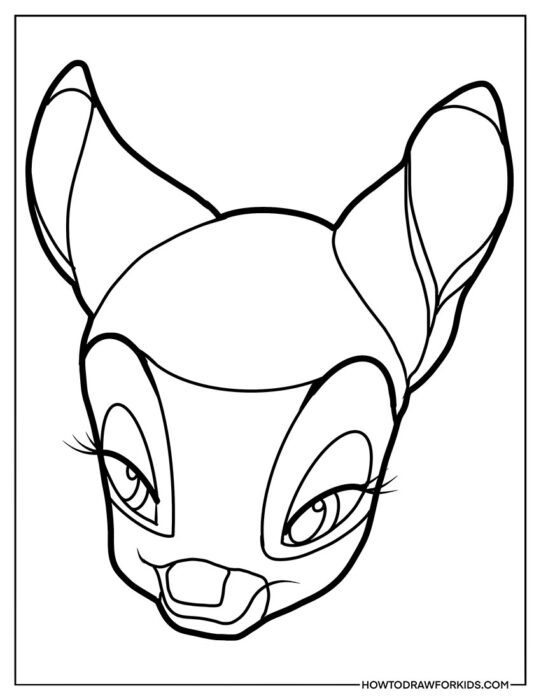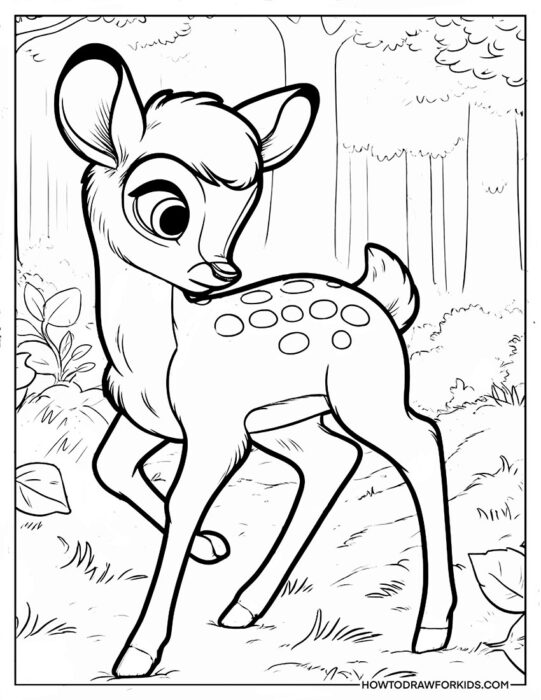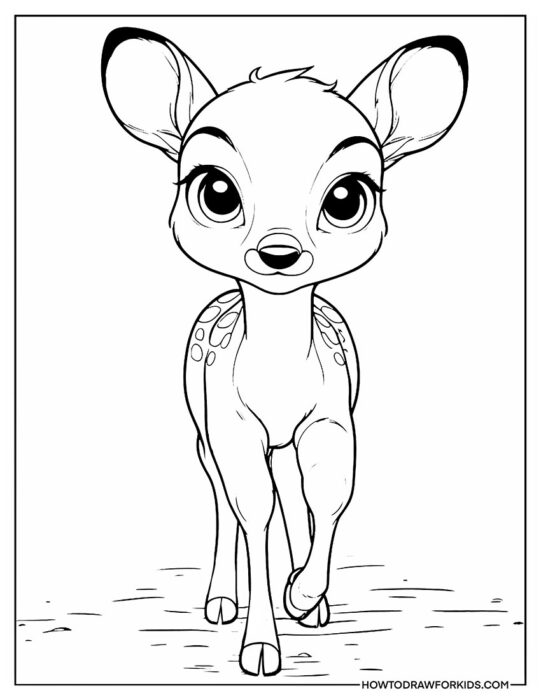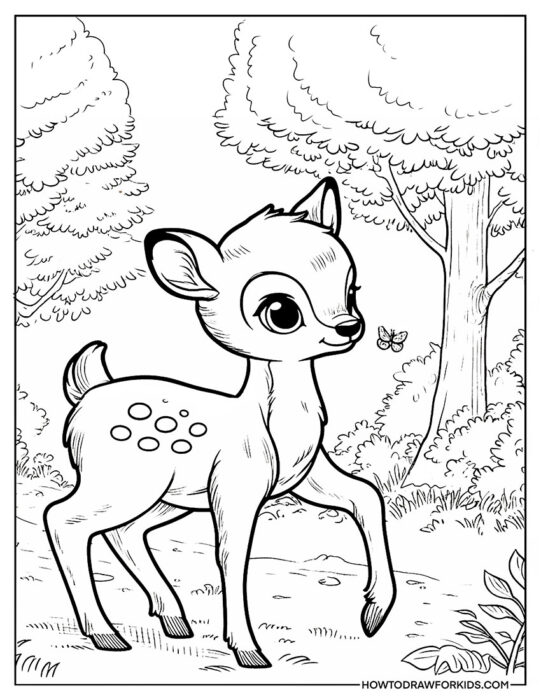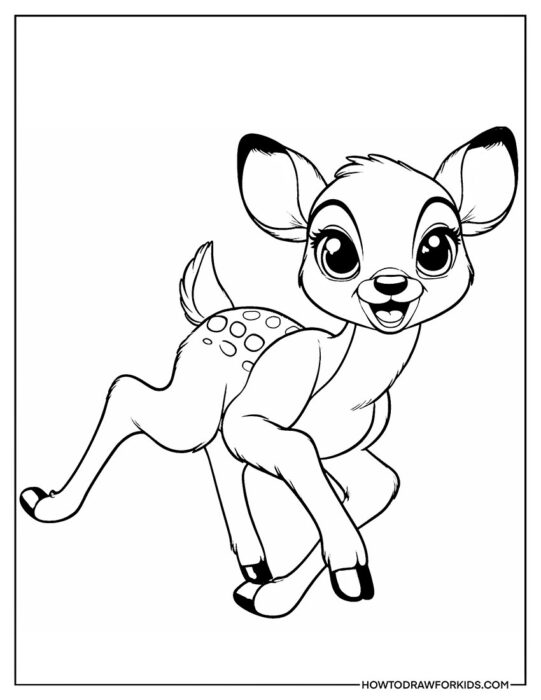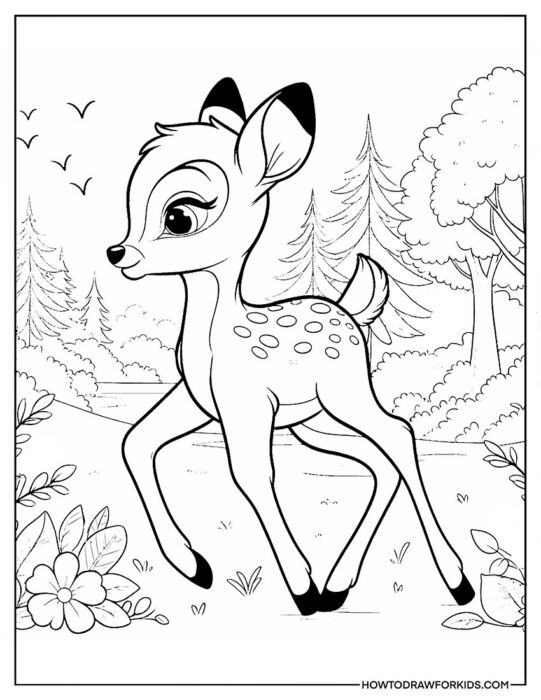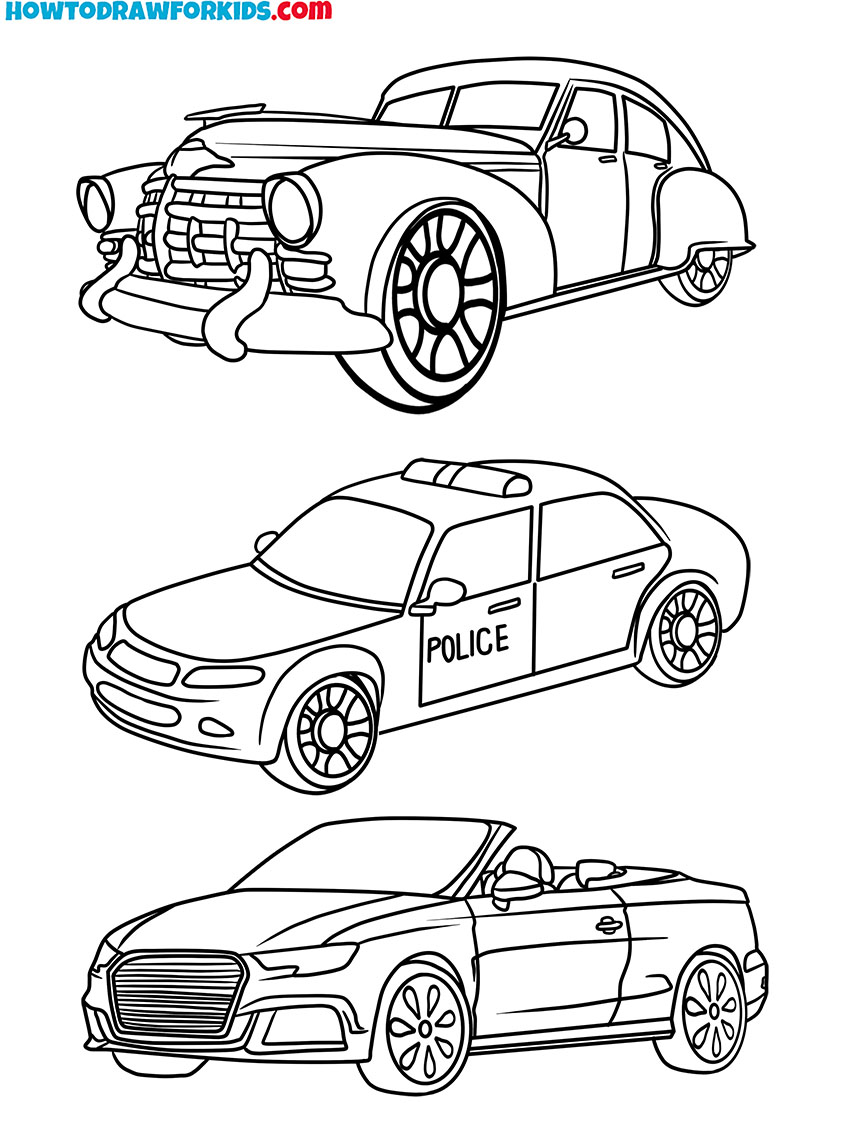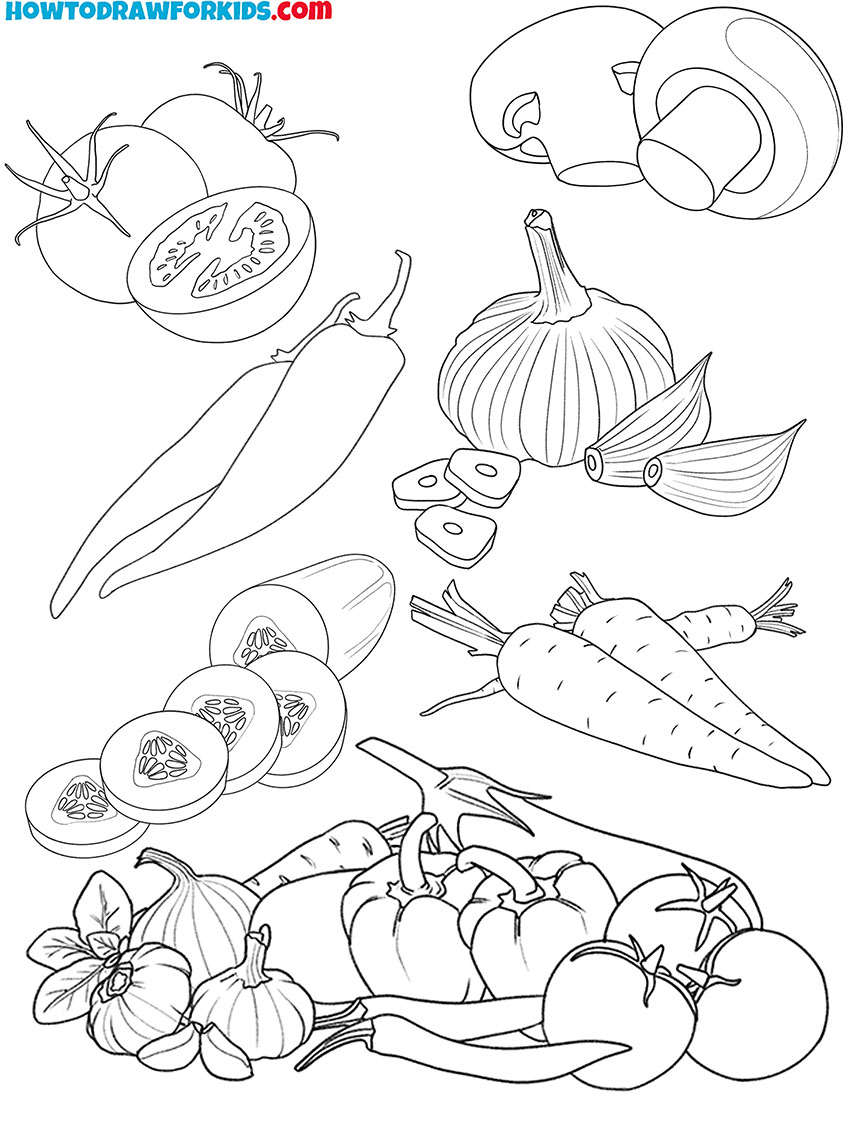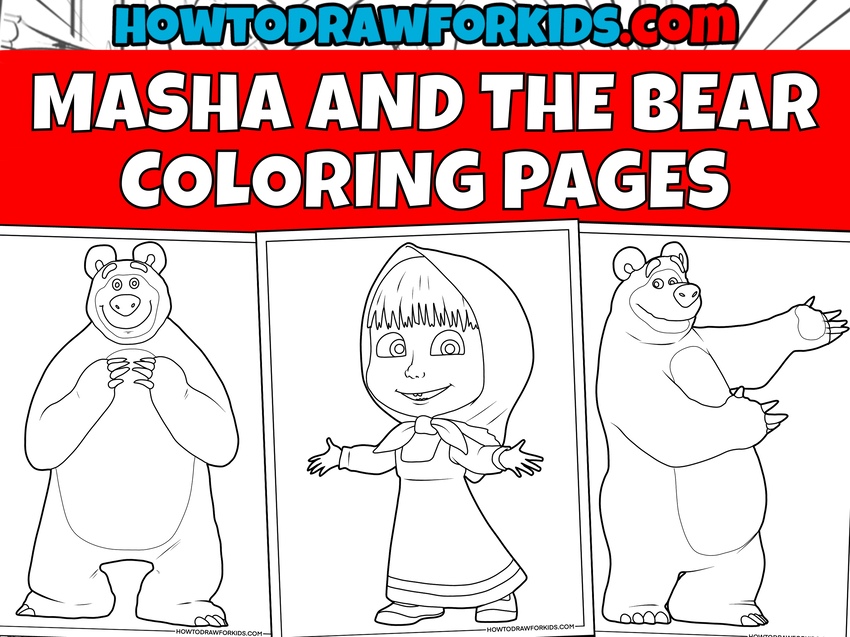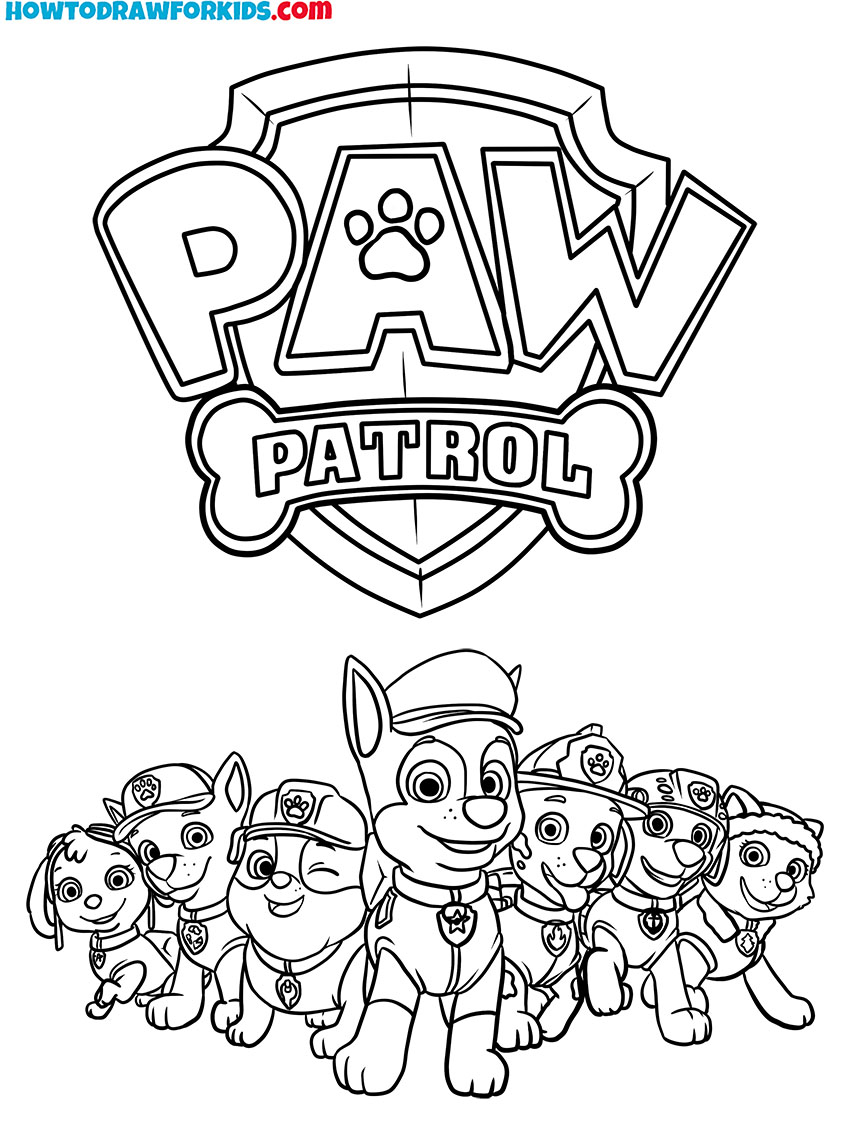Bambi Coloring Pages
My collection of Bambi coloring pages features Bambi and his friends set against the picturesque backdrops of their forest home.

Bambi Coloring Pages: Introduction
As you begin working with your Bambi coloring pages, prepare to add colors similar to those found in the famous cartoon.
Bambi is typically colored in gentle browns and beiges to match his form. Thumper, with his energetic spirit, can be shaded in various grays with pink for his nose and ears. Flower, the skunk, can be drawn with a mix of black and white, along with a small touch of pink for his cheeks.
Bambi’s father, the Great Prince of the Forest, can be shaded in darker, more majestic browns to reflect his noble stature. You can also choose colors that represent the forest, such as muted browns, greens, and occasional wildflower shades.
When coloring these pages, subtle gradients can give a natural look to the fur and surroundings. It’s important to keep the colors in balance, matching the calm feeling of the forest and its creatures.
After the downloadable Bambi coloring pages, additional tips will be provided to help improve your coloring skills and ensure your work look really cool.
Bambi Coloring Pages
Download All Bambi Coloring Pages
In addition to providing individual Bambi coloring pages, a complete file has been compiled for easy access. This single download option simplifies obtaining the entire collection at once, ensuring all illustrations are available for quick use.
How to Color Bambi and Other Characters
When coloring characters from the story of Bambi, it is helpful to consider the traits, personalities, and environments they represent. The following provides detailed suggestions on how to approach the coloring of each main character, with a focus on creating a realistic and appropriate visual representation.
- Bambi: As the young prince of the forest, Bambi is often depicted with light brown or tan fur. His underbelly, typically a much lighter color such as off-white or cream, contrasts with the rest of his body. His eyes are a prominent feature, and they can be colored in deep shades of brown. For his legs, you can use slightly darker shades of brown.
- Thumper: He is typically depicted as gray with a white belly. Different shades of gray can be used for his fur, with slightly darker grays around his back and softer, lighter grays for his belly. To give his appearance more life, pink can be added to his nose and inner ears. Additionally, his feet can be colored with lighter grays.
- Flower: The skunk, Flower, is traditionally shown with black and white fur, which gives him a striking appearance. However, you can incorporate shades of gray into his fur. His black fur can be softened with darker grays, while the white stripes on his back should remain bright. Occasionally, hints of lavender or pink can be added to his cheeks or the flowers around him, in reference to his name.
- Faline: Bambi’s friend, and later his love interest, Faline can be colored in shades similar to Bambi but with a few distinctions. Her fur can be a blend of soft brown tones with golden or reddish hints, particularly on her ears and around her back. Her eyes can also be shaded in warm brown tones, and her face can have lighter highlights.
- The Great Prince of the Forest: As Bambi’s father, the Great Prince should be colored in much darker shades. His fur should be a deep brown or dark gray, with lighter shading on his underbelly or chest to add contrast. Compared to Bambi, the Great Prince should appear more solid and sturdy, which can be achieved by using stronger, more defined colors.
- Friend Owl: Friend Owl, as the wise bird of the forest, can be colored using a mixture of browns, creams, and darker shades. His feathers allow for the use of multiple tones, with lighter browns and creams for his face and underbelly, and darker browns for his wings and back. His eyes are a central feature of his character, usually depicted as a bright yellow, which can be made to stand out against his otherwise muted fur tones.
When approaching the coloring of these characters, it’s useful to focus on consistency and subtle variation in shading. Paying attention to these color characteristics allows for a more accurate representation of each character.
Advanced Coloring Techniques
As you conclude your Bambi coloring pages, integrating light and shadow can dramatically enhance the depth of your scenes. Apply lighter shades to areas where sunlight naturally falls and darker tones to shaded regions to mimic the natural interplay of light in the forest. This technique brings a three-dimensional realism to your artwork.
In the background landscapes, experiment with blending techniques to create smooth transitions between colors. This approach is particularly effective for depicting atmospheric effects like morning mists or the rich, dusky hues of a forest at twilight. Using tools like watercolor pencils or soft pastels can facilitate gentle blending and layering of colors.
Pay close attention to texture in your coloring to make the scenes come alive. For the animals, short, light strokes can simulate soft fur, while vertical, irregular lines can mimic the roughness of tree bark. These textural details enhance realism and add a tactile quality to your pages.
Finally, don’t hesitate to introduce personal touches or creative liberties with your color choices. While naturalistic colors are typical, infusing unexpected hues can transform your work, making it uniquely reflective of your personal style. This freedom in coloring makes the process more enjoyable and results in distinctive art pieces that stand out.
How to Avoid Common Errors While Coloring Bambi
When beginners start coloring Bambi pages, several common mistakes can detract from the potential beauty of their artwork. Recognizing and understanding these pitfalls is the first step towards improving one’s coloring skills and enhancing the final result.
Using overly bright or unnatural colors can take away from the gentle, nature-inspired look of the characters. Sticking with muted tones and earth colors, like browns, greens, and grays, better matches the forest setting where Bambi and the other characters live.
Neglecting shading can result in a flat appearance. It’s important to apply gradual shading to show the natural curves of each character, especially Bambi’s fur or Thumper’s soft belly. Proper shading adds dimension, making the characters look more realistic.
Using harsh, separate color blocks without blending can look unnatural, especially when coloring fur. Blending various shades of the same color, particularly with Bambi’s light brown fur, ensures a more natural appearance that aligns with real-life animals.
Focusing solely on the characters and neglecting the background creates an incomplete image. Including subtle details, such as trees, leaves, and other forest elements, helps place the characters in their natural environment and completes the scene.
Coloring with just one shade for the entire character creates a flat, lifeless image. Variations in the shade, like adding darker tones around the legs and underbelly or lighter shades for highlights, provide realism, especially for animals like Bambi.
Conclusion
This concludes the Bambi coloring pages session. I hope they provided relaxation and a peaceful activity, allowing you to color various forest scenes and characters from this legendary cartoon.
I also provide a range of themed coloring pages on my website. You can check pages featuring characters like Moon Knight or the X-Men. These collections are created to offer variety and can help develop your coloring skills while providing entertainment.
For future updates and new coloring pages, follow me on social media. Your feedback is important. Feel free to share your thoughts or suggest ideas for future content to help improve the offerings based on your preferences.


